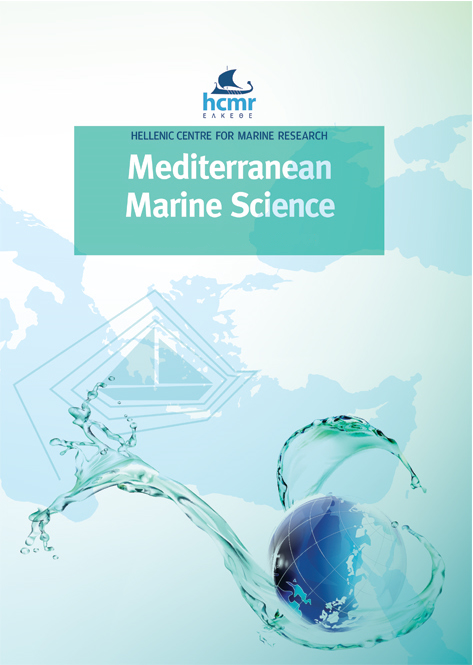Effects of sampling intensity and biomass levels on the precision of acoustic surveys in the Mediterranean Sea
Abstract
Acoustic surveys represent the standard fishery-independent method worldwide for evaluating the biomass and spatial distribution of small pelagic fish populations. Considering the peculiarities of the spatial behaviour of pelagic fishes, the efficiency of the survey design in determining their biomass and spatial distribution is related to its ability to capture the portion of the patches accounting for larger part of the total biomass. Yet, the spatial structure of the patches could be strongly influenced by ecosystem characteristics as well as by changes in total biomass related to a density-dependent mechanism. This is of particular interest for anchovy and sardine which are known for their wide fluctuations and high sensitivity to the environment. In this study, we analysed the efficiency of acoustic surveys, targeting European anchovy (Engraulis encrasicolus) and European sardine (Sardina pilchardus), in 10 different areas of the Mediterranean Sea across three years of different biomass levels. Using the geostatistical Coefficient of Variation (CVgeo) of the average occurrence probability of high/medium density values, we showed different patterns in terms of survey design efficiency among areas and species. Anchovy usually showed lower CVgeo than sardine, but in the Alboran Sea. In 4 out of 20 cases, CVgeo values showed a consistent decrease with increasing biomass while in the remaining cases the CVgeo did not follow any clear pattern suggesting the presence of important environmental effects. Higher survey design efficiency was found in high productive sectors influenced by river run-off, letting us to hypothesize that higher productivity along with the presence of well-localized enrichment mechanisms could favour a spatially consistent distribution and coherent organization of fish population leading to higher precision estimates with a given transect design. While most surveys displayed CVgeo close to 10% or less even at low biomass, evidencing generally good performances of the survey design, a few areas exhibited higher CVgeo, yielding discussions about a potential need to decrease the inter-transect distance, always keeping in mind that survey should be as synoptic as possible.
Article Details
- Come citare
-
BARRA, M., BONANNO, A., HATTAB, T., SARAUX, C., IGLESIAS5, M., LEONORI, I., TIČINA, V., BASILONE, G., DE FELICE, A., FERRERI, R., MACHIAS, A., VENTERO, A., COSTANTINI, I., JURETIĆ, T., PYROUNAKI, M. M., BOURDEIX, J.-H., GAŠPAREVIĆ, D., KAPELONIS, Z., CANDUCI, G., & GIANNOULAKI, M. (2021). Effects of sampling intensity and biomass levels on the precision of acoustic surveys in the Mediterranean Sea. Mediterranean Marine Science, 22(4), 769–783. https://doi.org/10.12681/mms.26100
- Fascicolo
- V. 22 N. 4 (2021): Special Issue
- Sezione
- Special Issue MEDIAS
Authors who publish with this journal agree to the following terms:
- Authors retain copyright and grant the journal right of first publication with the work simultaneously licensed under a Creative Commons Attribution Non-Commercial License that allows others to share the work with an acknowledgement of the work's authorship and initial publication in this journal.
- Authors are able to enter into separate, additional contractual arrangements for the non-exclusive distribution of the journal's published version of the work (e.g. post it to an institutional repository or publish it in a book), with an acknowledgement of its initial publication in this journal.
- Authors are permitted and encouraged to post their work online (preferably in institutional repositories or on their website) prior to and during the submission process, as it can lead to productive exchanges, as well as earlier and greater citation of published work (See The Effect of Open Access).










